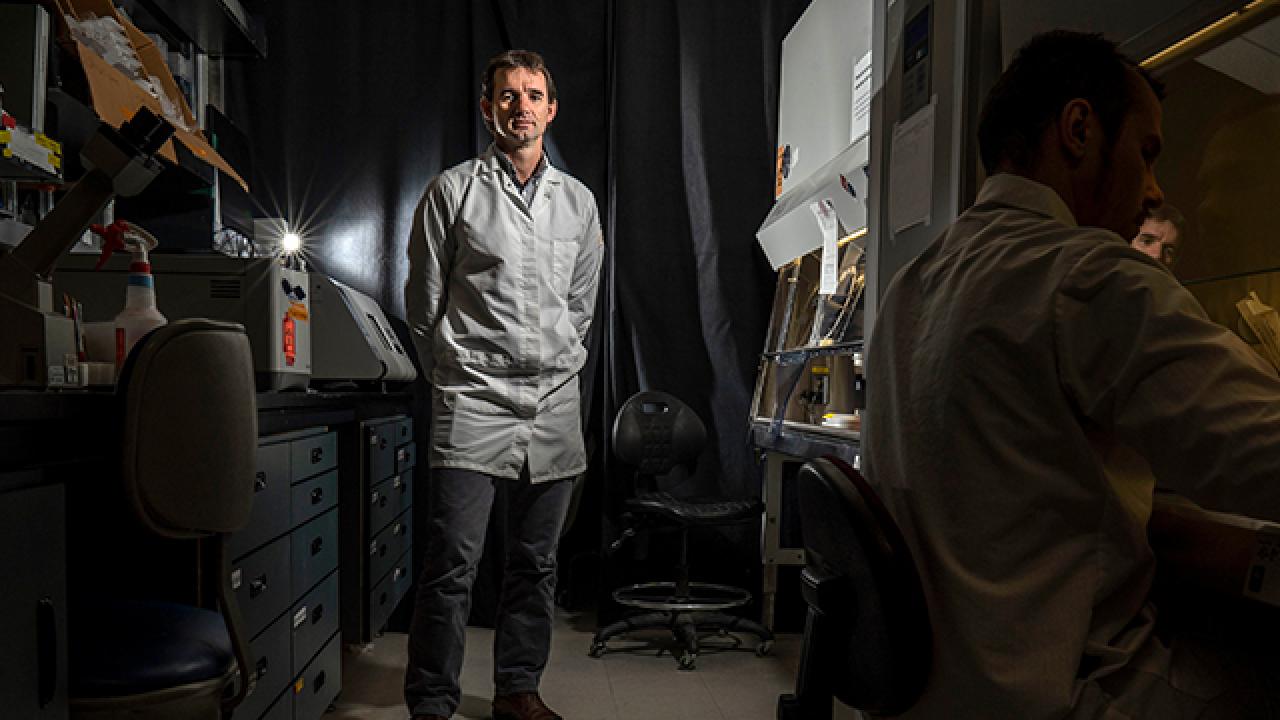
A New Day is Dawning for Genetic Improvement in Livestock
The future of livestock breeding is taking shape at UC Davis. In the laboratory of animal scientist Pablo Ross, groundbreaking discoveries are being made that will pave the way for raising healthier, more productive and better-adapted cattle, sheep and other species.
In 2018, the Ross lab reported the first successful effort to grow embryonic stem cells from cattle in a petri dish. This milestone is a crucial step in the development of faster and more focused breeding programs.
“After 40 years of attempts to do this, we finally found a way,” Ross said. “We think that these cells hold huge potential for improved genetic selection in livestock.”
The Genetic Challenge
Humans have been shepherds of genetic selection for thousands of years through the domestication of livestock and crop species. But traditional methods of doing so can be inexact and time consuming. When crosses are made to improve plants or animals with desirable traits, undesirable characteristics sometimes come with them.
For instance, modern dairy cows have been bred to produce milk in astonishing amounts—on average nearly 23,500 pounds per cow per year, according to the USDA. That’s far more than what’s needed for the calf, but it’s provided a valuable source of animal protein for humans. However, selecting animals with higher milk production is linked to a loss of reproductive efficiency.
“In California we see a marked decrease in fertility during the summer months,” Ross said. “We know that the high heat period is affecting the embryos in cattle. We need to understand the mechanisms of heat stress on early development so we can overcome or correct this fertility problem.”
A particular focus of his research is the molecular changes that happen in connection with fertilization, especially in the first week after the union of sperm and egg that transforms these cells into an embryo. “Embryonic cells have the role and responsibility to form all the different cell types in the body,” Ross said. “By developing a better understanding of embryo development, we will be in a better position to identify potential problems and opportunities for improvement.”
How life springs into form is something that’s fascinated Ross since he was a child growing up in Argentina. He initially planned to follow in his father’s footsteps as a livestock veterinarian. “In graduate school I got very interested in research and mostly interested in how a new individual gets made, so I started studying early development in cows,” he said.
Improving technologies for assisted fertilization is one of the keys to faster genetic progress. Yet another fundamental challenge is in deciphering the genome, the genetic blueprint for each species.
Cracking the Code
The cattle genome was first described in 2009. It contains about 3 billion “letters” of the DNA code.
“The problem is we only understand about 2 percent of those 3 billion letters—what they do, what’s their role in the genetic sequence,” Ross said.
He and colleagues have embarked on a massive undertaking with researchers at nine different academic institutions to understand the “functional” areas in the other 98 percent of the cattle genome. Ross is the principal investigator for the project, which is funded by USDA’s National Institute of Food and Agriculture.
These scientists are analyzing the active regions of 60 different tissues with the use of genetic markers on DNA sequences. There are about 20,000 genes contained within the genetic code of cattle. These genes are important because how they are expressed is what distinguishes one animal from the next. Much of the variation between animals arises in regions of the genome now under study.
“This work is giving meaning to the genome,” Ross said. “This is the difference between being able to read and being able to comprehend what you’re reading. If we’re able to do that, it will improve our capacity to identify individuals with better traits.”
Ross likens it to building a dictionary, and that information will eventually give cattle breeders the tools to make genetic improvements resulting in animals with more efficient feed conversion rates, better disease resistance, even behavioral differences and other desirable traits.
Game-Changing Technology
The development of technology to harnesses the intrinsic power of embryonic stem cells could accelerate genetic improvement in livestock 10 times faster than what is possible today, according to Ross. Instead of growing individual animals to adulthood to assess desirable traits, observations could be made much more quickly with cellular samples of DNA.
This approach also holds the promise of being able to select traits for different environments and production systems—the right animal for the right condition. Imagine “customizing” a cow for the humid conditions of Florida, the cold weather in Wisconsin or the dry heat in California.
“This could be a real game-changer in terms of animal breeding and genetic selection,” Ross said.